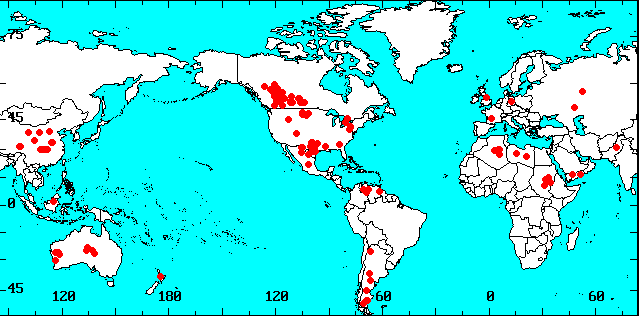

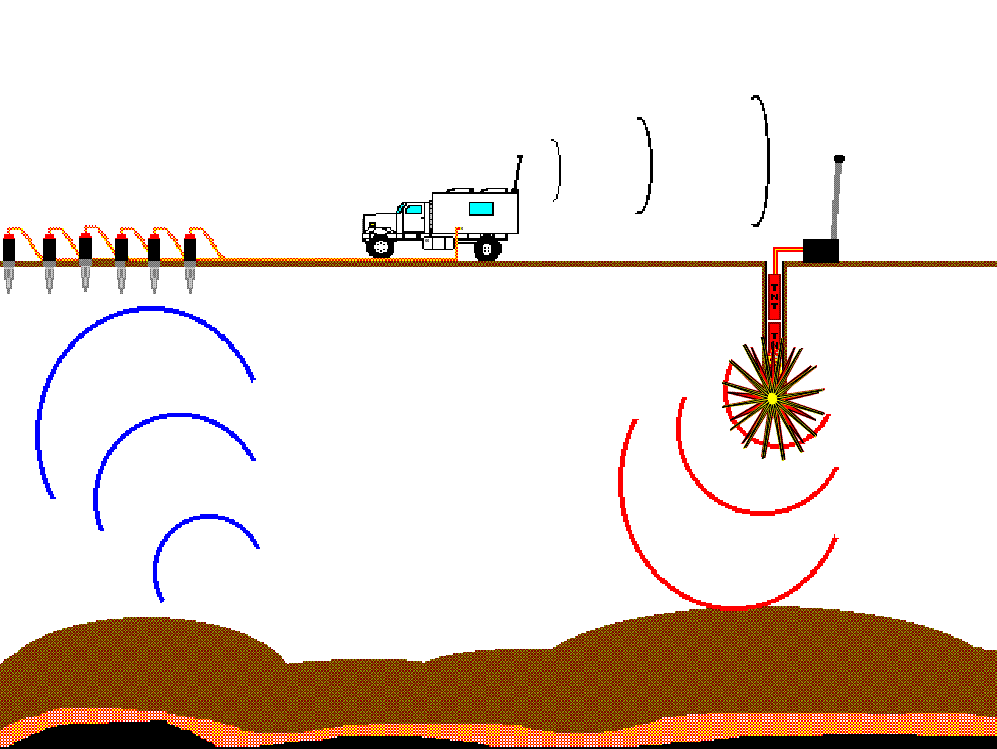

 In the 3D seismic method, we record many lines of receivers across the earth’s surface.
The area of receivers we record is known as a "patch". Often, we employ lines of source
points laid out orthogonally to the receivers. By sequentially recording a group of shots
lying between two receiver lines (referred to as a "salvo") and centered within the patch,
we obtain uniform, one-fold reflection information from a subsurface area that is one
quarter of the useful surface area of the patch. Although we usually record a large square
or rectangular patch, the useful data at our zone of interest is offset limited by several
geophysical factors. Therefore, we often consider the useful area of coverage as a circle
with a radius equal to our maximum useful offset. By moving the patch and recording more
salvos of source points, we accumulate overlapping subsurface coverage and build
statistical repetition over each subsurface reflecting area (bin).
The quality of the sub-surface image obtained can be related to the statistical diversity
of the information recorded for each cell of sub-surface coverage (known as a "bin"). The
more observations obtained that contain unique measurements of the echoes from a certain
area, the more successful we will be in re-constructing the subsurface geological
configuration that caused those observations. The multiplicity (or "fold") of the recorded
data for 2D and 3D methods is given by the following equations:
In the 3D seismic method, we record many lines of receivers across the earth’s surface.
The area of receivers we record is known as a "patch". Often, we employ lines of source
points laid out orthogonally to the receivers. By sequentially recording a group of shots
lying between two receiver lines (referred to as a "salvo") and centered within the patch,
we obtain uniform, one-fold reflection information from a subsurface area that is one
quarter of the useful surface area of the patch. Although we usually record a large square
or rectangular patch, the useful data at our zone of interest is offset limited by several
geophysical factors. Therefore, we often consider the useful area of coverage as a circle
with a radius equal to our maximum useful offset. By moving the patch and recording more
salvos of source points, we accumulate overlapping subsurface coverage and build
statistical repetition over each subsurface reflecting area (bin).
The quality of the sub-surface image obtained can be related to the statistical diversity
of the information recorded for each cell of sub-surface coverage (known as a "bin"). The
more observations obtained that contain unique measurements of the echoes from a certain
area, the more successful we will be in re-constructing the subsurface geological
configuration that caused those observations. The multiplicity (or "fold") of the recorded
data for 2D and 3D methods is given by the following equations:


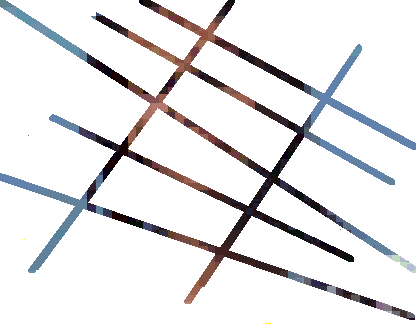



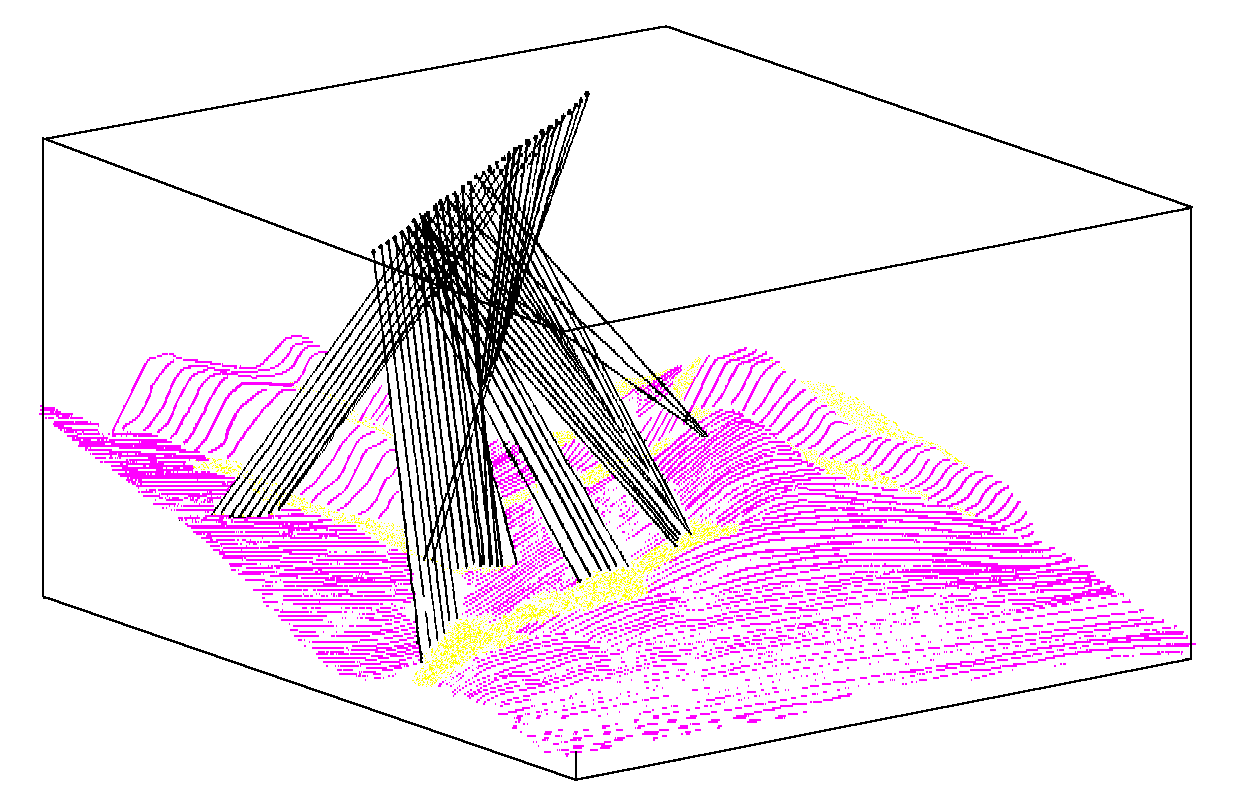
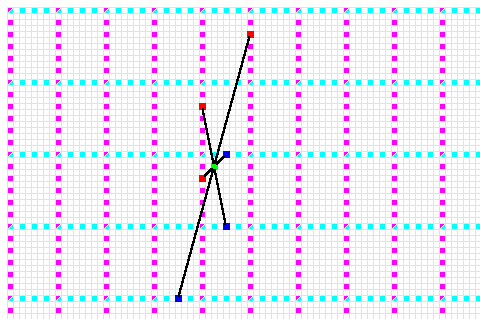
|
Typical Costs of 2D Seismic |
||||||
|
Play |
Offset |
Fold |
Source |
CDP |
Cost |
|
|
Type |
(depth) |
% |
Interval |
Size |
(per km) |
|
|
High Res |
500 |
50 |
10 |
5 |
$7,500 |
|
|
Shallow |
680 |
20 |
34 |
8.5 |
$6,500 |
|
|
Paleo U/C |
960 |
12 |
80 |
10 |
$5,500 |
|
|
D-3 |
1400 |
14 |
100 |
12.5 |
$5,000 |
|
|
Deep |
2000 |
20 |
100 |
12.5 |
$5,000 |
|
|
Foothills |
4000 |
40 |
100 |
12.5 |
$30,000 |
|
|
Typical Costs of 3D Seismic |
||||||
|
Play |
Offset |
Fold |
Line |
Bin |
Cost |
|
|
Type |
(depth) |
% |
Spacing |
Size |
(per sq km) |
|
|
High Res |
500 |
20 |
100 |
5 |
$700,000 |
|
|
Shallow |
700 |
10 |
200 |
15 |
$40,000 |
|
|
Paleo U/C |
1000 |
14 |
240 |
20 |
$24,000 |
|
|
D-3 |
1400 |
18 |
290 |
25 |
$18,000 |
|
|
Deep |
2000 |
20 |
400 |
30 |
$12,000 |
|
|
Foothills |
4000 |
10 |
1120 |
40 x 100 |
$8,000 |
|
|
2D versus 3D Seismic Activity Levels (1997) |
|||
|
2D |
3D |
||
|
Program Recorded
|
30,000 km |
24,000 sq km |
|
|
Crew Months |
200 |
350 |
|
|
Channels per Crew |
200 |
1200 |
|
|
Average Cost |
$5,000 |
$350,000 |
|
|
Total Expenditure |
$150,000,000 |
$420,000,000 |
|
|
2D versus 3D Estimated Results (1997) |
||||
|
2D |
3D |
|||
|
Wells Drilled on Seismic
|
3000 |
8000 |
||
|
Drill Density |
1 per 10 km |
1 per 3 sq km |
||
|
Seismic Costs /Well |
$50,000 |
$52,500 |
||
|
Est. Completion Rate |
60% |
80% |
||
|
Quality of Production |
Fair |
Good |
||